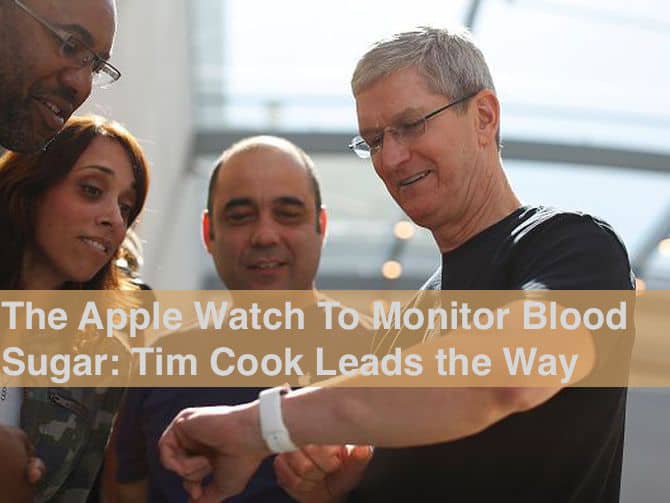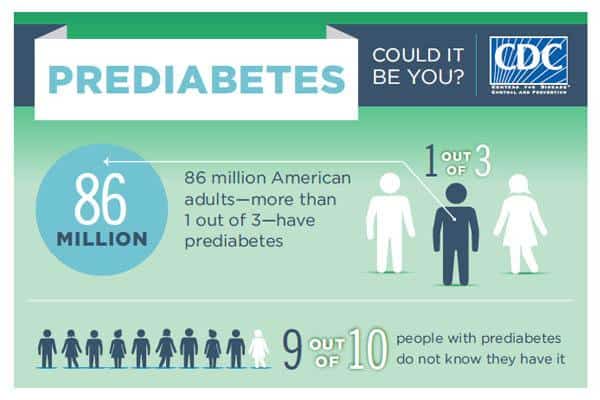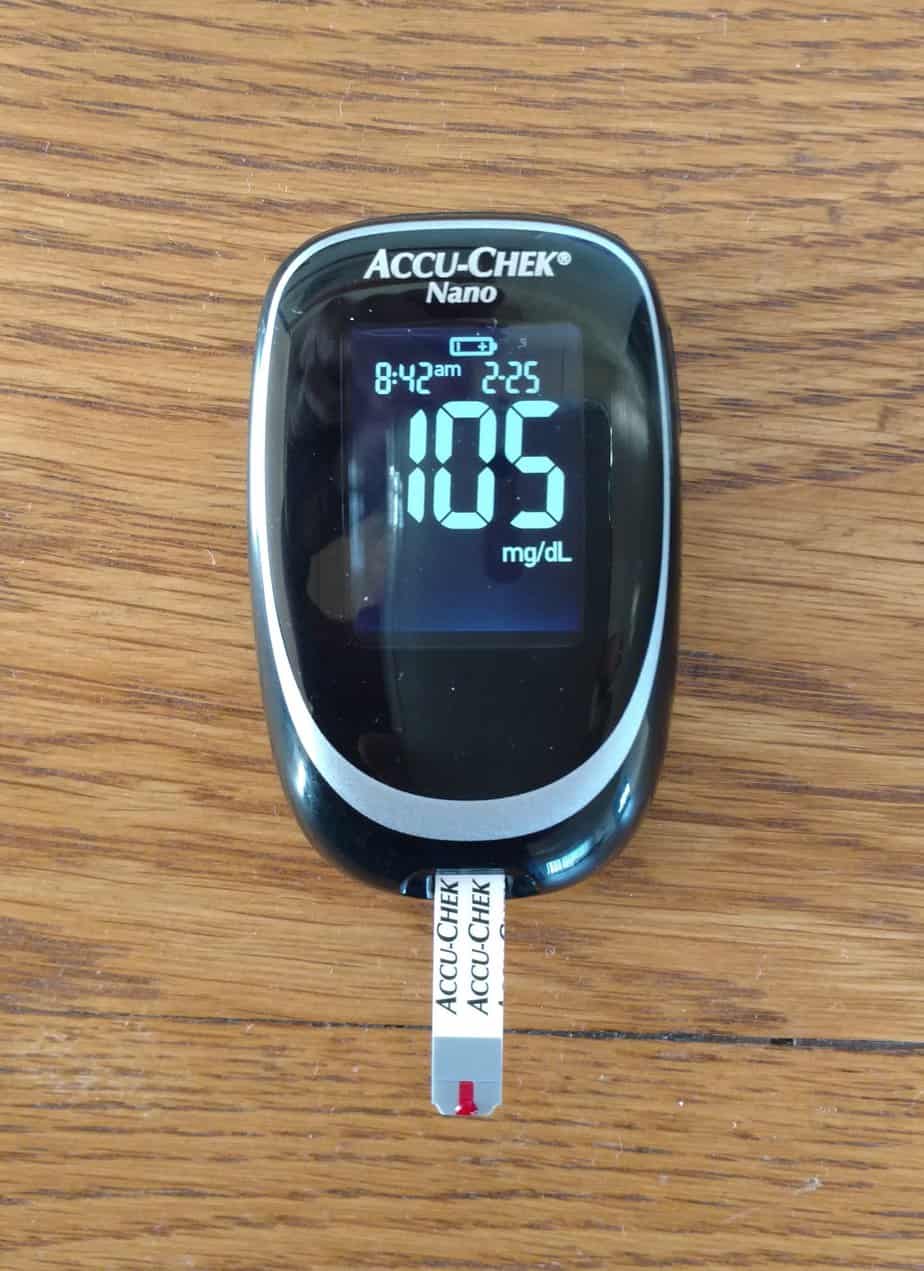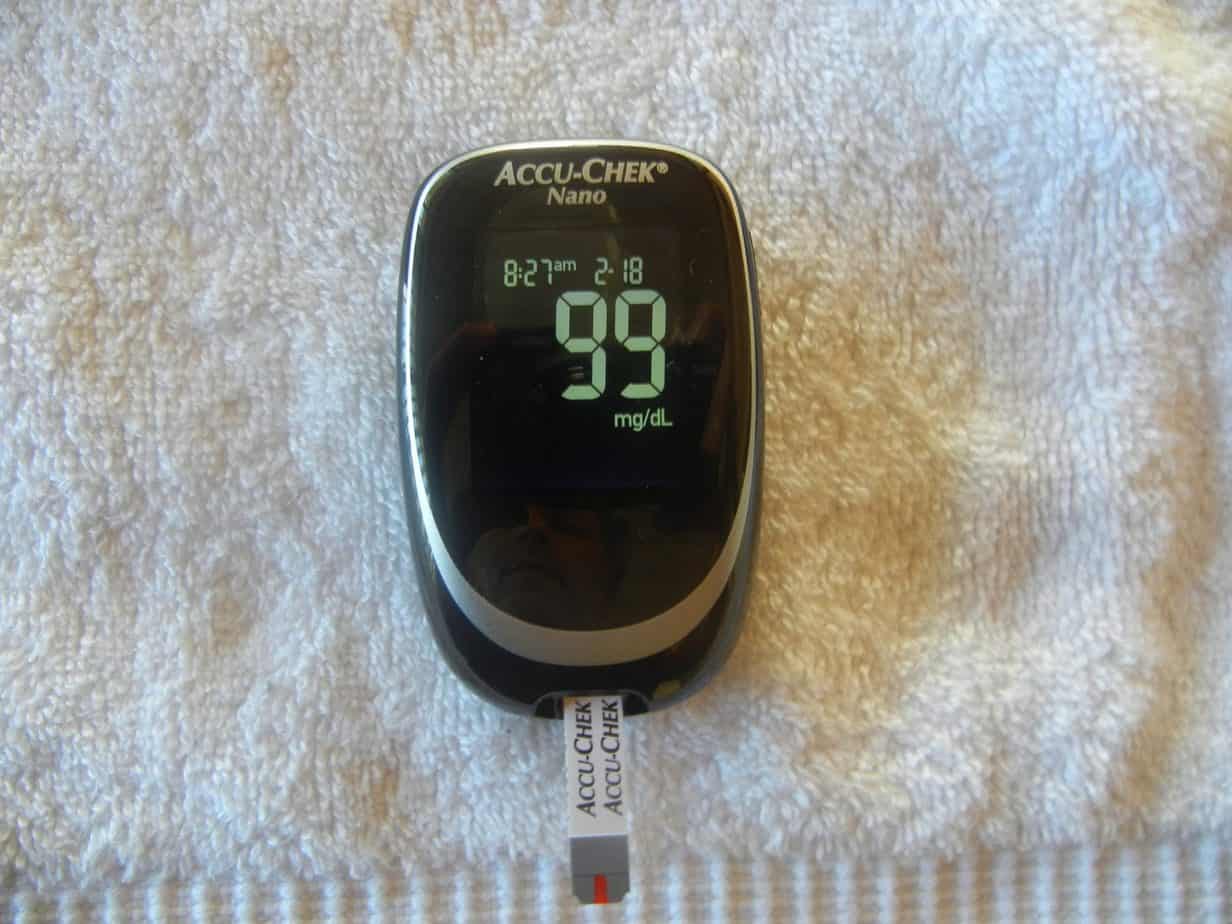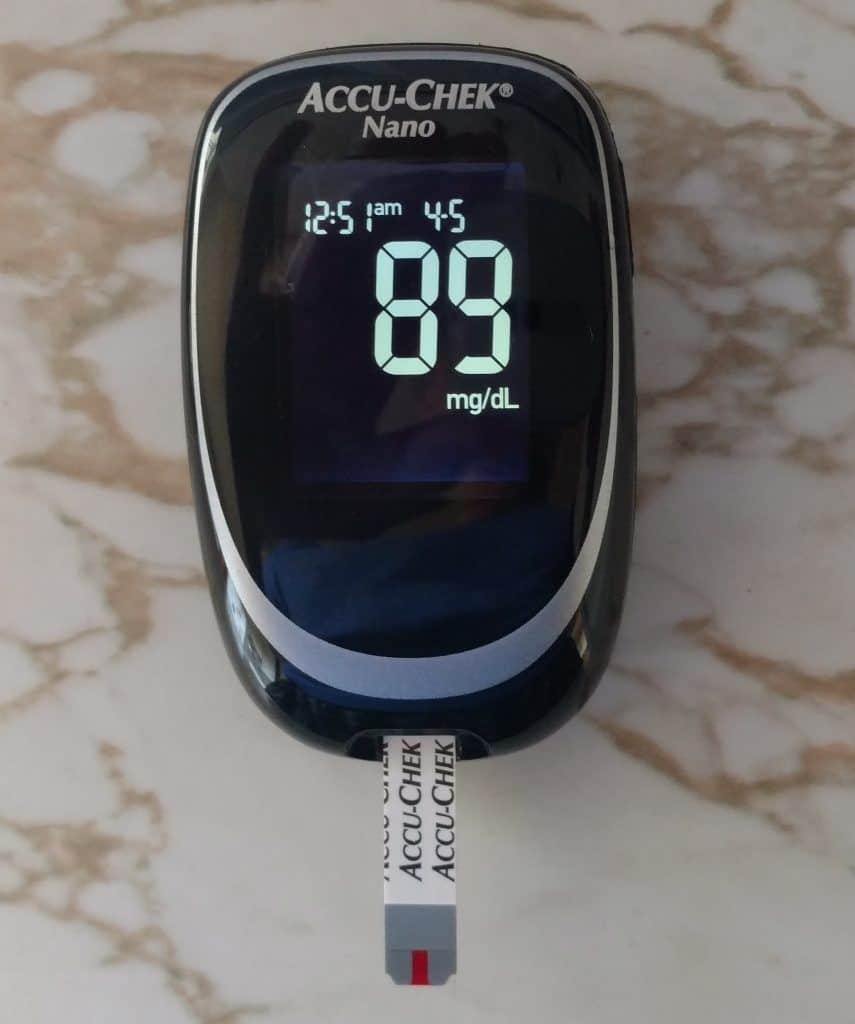The Apple Watch To Monitor Blood Sugar: Tim Cook Leads the Way
Tim Cook is leading the charge to make Apple Watch a platform to monitor blood sugar, heart rhythms and much more. Welcome to the world of biohacking. What you don’t measure, you can’t manage. (Watch the videos!)
I DON’T have one, but by all accounts the Apple Watch just keeps getting better and more useful. Right now it enables you to make calls, receive messages, send texts, listen to music, and count the steps you take, and much more.
That’s all good, but the real value of the Apple Watch is its potential. This technological marvel will continue to add value to you in the future, such as the all-important ability to monitor your health.
The Apple Watch can monitor and report important cardiovascular metrics, and right around the corner it will be able to do the same for blood glucose (sugar).
We’re about to enter the brave new world of self administered biohacking, where we’re able to monitor and evaluate a wide range of biomakers that signal the robustness of our health, or otherwise.
Tim Cook and the Apple Watch lead the way.
Researchers at the University of California, San Francisco used Apple Watch — and an algorithm by Cardiogram (The maker of Apple Watch’s built-in heart rate sensor) — to gather heart rate and electrocardiogram data from 6,158 individuals. Their objective was to determine if the Apple Watch’s sensors can differentiate between a normal heart rhythm and atrial fibrillation and it did – with 97% accuracy. (1)
But the most recent splash in the news was an apparent trend among a growing number of Silicon Valley executives and investors who continuously monitor blood sugar, even if they do not have diabetes, Apple’s CEO, Tim Cook, among them.
Based on CNBC’s description, it appears that the tracker Tim Cook is wearing is a separate, independent unit that communicates to the Apple Watch over Bluetooth, rather than an integrated Apple Watch feature. The glucose tracker looks like it’s on the Apple Watch, perhaps being physically attached to its chassis in some way to extend the watch’s intrinsic capabilities.
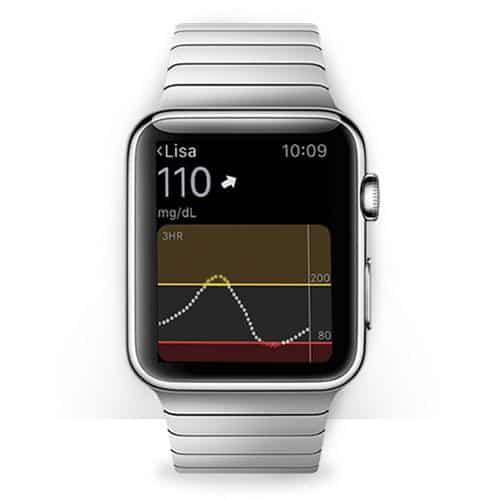 What’s happening here, says Diabetes Forecast, is that a hair-thin wire is placed just under the skin. A transmitter clips to it and sends glucose data via Bluetooth to a continuous glucose monitoring receiver, which then passes the information to an iPhone. From there, the data is sent to the watch through a Share2 app.
What’s happening here, says Diabetes Forecast, is that a hair-thin wire is placed just under the skin. A transmitter clips to it and sends glucose data via Bluetooth to a continuous glucose monitoring receiver, which then passes the information to an iPhone. From there, the data is sent to the watch through a Share2 app.
The Apple Watch is not widely available now, but might happen is a two phase release once it’s ready:
- Phase 1 would be for Apple to sell a separate blood sugar monitor device that integrates with Apple Watch; thus, you’d be using two units to test blood sugar levels.
- Phase 2 would be for Apple to integrate the glucose tracker inside the Apple Watch hardware/sensor into the Apple Watch chassis.
This is revolutionary and has the potential to help millions.
Read on and find out why.
Why Monitor Your Blood Sugar?
In just a bit I’ll describe why some Silicon Valley biohackers want to monitor blood sugar in order to ensure they can get to and stay in ketosis, a metabolic process where the body burns fat instead of glucose if there’s an insufficient amount for energy needs. The thinking is that this is a strategy to increase healthspan, and perhaps lifespan as well.
But first, know that you need not be devoted to health optimization to want to know how your blood sugar responds to:
- A fasted state (fasting blood sugar is measured first thing in the morning before ingesting anything after not haven eaten since the night before);
- A post meal (called “postprandial“) blood sugar reading showing how blood sugar reacts to foods and drinks consumed; and
- Which foods and drinks spike your blood sugar, which may be unique to you.
The CDC (Centers for Disease Control and Prevention) estimates that as of 2012, 9.3% (29.1 million) Americans are diabetic and 27.8% (8.1 million) are undiagnosed; meaning, they are diabetic but don’t know it. (2) Another 86 million adults – more than one in three U.S. adults – have prediabetes, where their blood sugar levels are higher than normal, but not high enough to be classified as type 2 diabetes. (3)
Given all this, there’s a pretty significant chance that your blood sugar is too high.
In type 2 diabetes, certain cells in the pancreas called “beta cells” produce insulin, but other cells throughout the body do not respond normally to it by effectively using glucose (sugar) from ingested food (primarily carbohydrates) for energy. This causes sugar to build up in your blood and can lead to serious health problems.
Let’s look at some numbers:

Note these two things:
(1) The recent conventional upper limit for “normal” fasting blood sugar is 99 mg/dL; however, the Life Extension Foundation and some others who study such things, like functional medicine expert Chris Kresser, advise that this number should be lower per this chart:

Functional medicine expert Chris Kresser’s ideal blood sugar markers
(2) In Europe and elsewhere, blood sugar is measure in mmol/L (millimoles per liter) not mg/dL (milligrams per deciliter).
Click here to see a conversion table.
Conversion Table for Blood Glucose Monitoring
People from outside the US may find this table convenient for converting US blood glucose values which are given in mg/dl into values generated by their blood glucose meters, which are generated in mmol/L, courtesy of Joslin Diabetes Center.
You can also use this calculator.
| mmol/L | mg/dl | mmol/L | mg/dl | mmol/L | mg/dl | ||
|---|---|---|---|---|---|---|---|
| 0.06 | 1 | 6.7 | 120 | 16.0 | 288 | ||
| 0.28 | 5 | 7.0 | 126 | 16.6 | 300 | ||
| 0.55 | 10 | 7.2 | 130 | 17.0 | 306 | ||
| 1.0 | 18 | 7.5 | 135 | 18.0 | 325 | ||
| 1.5 | 27 | 7.8 | 140 | 19.0 | 342 | ||
| 2.0 | 36 | 8.0 | 145 | 20.0 | 360 | ||
| 2.2 | 40 | 8.3 | 150 | 20.8 | 375 | ||
| 2.5 | 45 | 8.9 | 160 | 22.2 | 400 | ||
| 2.8 | 50 | 9.0 | 162 | 23.0 | 414 | ||
| 3.0 | 54 | 9.4 | 170 | 24.0 | 432 | ||
| 3.3 | 60 | 10.0 | 180 | 25.0 | 450 | ||
| 3.9 | 70 | 10.5 | 190 | 26.4 | 475 | ||
| 4.0 | 72 | 11.0 | 196 | 27.7 | 500 | ||
| 4.4 | 80 | 11.1 | 200 | 30.0 | 540 | ||
| 4.7 | 85 | 12.0 | 216 | 33.3 | 600 | ||
| 5.0 | 90 | 12.5 | 225 | 38.8 | 700 | ||
| 5.5 | 100 | 13.9 | 250 | 40.0 | 720 | ||
| 6.0 | 106 | 14.4 | 260 | 44.4 | 800 | ||
| 6.1 | 110 | 15.0 | 270 | 50.0 | 900 |
As I wrote in You Absolutely Need To Lower Your Blood Sugar:
If you’re overweight, over 45 years of age, inactive and eat processed/fast foods then it’s likely that your blood sugar is too high — especially given the new, lower acceptable levels.
Read my articles on optimizing blood sugar
Once upon a time, it was thought that all you had to do to understand what spiked your blood sugar was to know the glycemic index of a particular food consumed. That ended with the research findings of the scientists at the Weizmann Institute of Science who studied personalized nutrition:
Unless you want to prick yourself multiple times a day with a lancet to learn how your blood sugar reacts to different kinds of foods and drinks, you’re going to need a different technique to monitor blood sugar.
The big wigs in Silicon Valley understand this well.
Why the Blood Sugar Fascination in Silicon Valley?
CNBC reports that:
Silicon Valley’s elite are flocking to an extreme high-fat diet in hopes of living longer.
Tim Cook may be the most prominent face of the Silicon Valley biohacking movement, but many others among the Silicon Valley elite are doing experiments on their bodies in hopes of prolonging their lives and improving their health, as you’ll see in this video about Silicon Valley executives and investors who monitor blood sugar and are enthralled with the ketogenic diet:
People concerned with optimizing their health focus want to monitor blood sugar to avoid the many symptoms associated with high blood sugar, these among them, according to Healthline.com:
- Fatigue or chronic fatigue syndrome, low energy levels
- Sugar/carb cravings
- Excessive thirst
- Weight fluctuations/weight gain
- Increased urination
- Mood swings, nervousness or “jitteriness”
- Blurred, worsening vision
- Slow healing of skin wounds, dryness, cuts and bruises
- Frequent infections
- Heavy breathing and trouble exercising
- Tension headaches
To the extent that the so-called ‘ketogenic’ diet (a diet exceptionally high in fat and low in carbohydrates) reduces blood sugar (it is considered an experimental treatment for diabetes), then some those inclined to hack their health, sorta speak, are trying it.
CNBC tells us that Ambar Bhattacharyya, a managing director with Maverick Ventures, got enamored with the low-carb, high-fat “ketogenic” diet during the due diligence process for a startup called Virta Health.
Like all ketogenic diets are, his was designed to transition his body to burning fat as its primary fuel source, rather than glucose. Those on the diet typically eat less than 30 grams of carbs each day, an amount dramatically lower than the amount ingested by the average man, 296 grams. (The average for a woman is about 224 grams.) (4)
Initially, the ketogenic diet seemed to work for Battacharyya: He lost about 7 pounds in the first week, but gave up after a few months. “I started to get really cranky and had to drink a lot of coffee,” he recalled. “That meant a lot more bathroom breaks during our partner meeting.” (5)
Bryan Roberts, a partner at venture capital company Venrock, gave nutritional ketosis a try after investing in Virta. His rationale for trying it was to provide product development feedback, but he lost ten pounds after enrolling in the program.
The CNBC article also touches on Vishal Vasishth, a managing director at Obvious Ventures and Virta Health’s CEO Sami Inkinen experiences with the ketogenic diet, and underscores that this diet is not for everyone:
“Outside of Virta’s work, there’s a lot of people biohacking themselves,” he said. “It’s a little scary to me because it’s a powerful tool, but a lot of things can go wrong.”
Some VCs who have tried the diet described a slew of positive effects, including weight loss and sustained energy throughout the day. Others said it caused headaches, at least in the initial weeks, and mood swings.
Good or bad, testing any biohacking protocol such as the ketogenic diet will be vastly easier with devices like the Apple Watch.
it’s notable that at one company, nutrition supplement start-up Nootrobox, nearly every employee tracks their blood sugar throughout the day, though none have diabetes, nor do they have the advantages provided by the Apple Watch’s ease of use and relative value.
A CNBC report tells us that a doctor on the Nootrobox team, Manuel Lam, helped the employees obtain regulated medical devices called continuous glucose monitors. The equipment, which is made by companies like Dexcom and Medtronic, can cost up to $100 a month for those who would need receive reimbursement for their insurance companies.
Nootrobox CEO Geoff Woo believes the expense is worth it, because monitoring his blood sugar trends helps him optimize his diet to avoid that afternoon slump from blood sugar crashes, and thereby make him more effective.
I’d also suggest, that Nootrobox would be a natural place for blood sugar monitoring due to their mission, which appears to be about health optimizing and biohacking. In fact, Nootrobox’s guides on hacking cognition, diet and exercise are among the best I’ve come across.
Want to biohack your age? Sign-up for my book, The Ageproof Method.
If this ketogenic diet fad lasts, and/or people learn that they may be prediabetic, given the prevalence of high sugar junk food and carbs that dominate our diets, I anticipate much demand for the Apple Watch glucose monitoring capabilities so that people will be able to accurately gauge how their blood sugar reacts to specific foods, particularly carbs.
I surely would want one, because I’m tired of using the typical blood glucose monitors that require you to prick a finger for a blood sample, and can be inaccurate. (For more on my blood sugar story, go here.)
How You Can Control Your Blood Sugar Now
I shared my concern about my own high fasting blood sugar in My Blood Sugar Numbers Dumbfound Me. Like anyone who for health optimization or out of necessity (those with diabetes) that needs to extract a drop of blood perhaps multiple times per day, I grew weary of using my glucose monitor.
Here’s a pic of what it looks like on a day when it measured my fasting glucose at 105 mg/dL, not particularly good; in fact considered prediabetic by some.
Alarmed, I took action and a couple of weeks later, this:
I kept at it, and after another couple of weeks, this:
How did I get from 105 (actually 110 at one point) to 89 ng/dL?
- I began to drink one tablespoon of organic apple cider vinegar in eight ounces of water several times a day;
- I added cinnamon to my smoothies and everything else it would taste fine with; and
- I added Berberine, Amla and Ashwagandha to my smoothies (since I use the powder form, not capsules.
- I made sure that I exercised consistently. (Here’s how it affects blood sugar.)
Read this for some details about my protocol.
So, what can you do?
- Get the Apple Watch, or some similar device that can track your blood sugar throughout the day and give you insights about what foods and activities (like no exercise) affect you glucose levels.
- Get informed about the various protocols by reading my article on controlling blood sugar.
- Eat according to the following infographic, courtesy of Dr. Josh Axe.
You don’t have to buy an Apple Watch once its blood sugar monitoring capability is offered to the masses, nor do you have to be a Silicon Valley mover and shaker.
If you think you might have high blood sugar, get your doctor to test it, or test it yourself. If it’s above 90 ng/dL, come back and read again how I got from 105 to 89 ng/dL and follow the links in this article.

(source)
Last Updated on February 25, 2024 by Joe Garma

